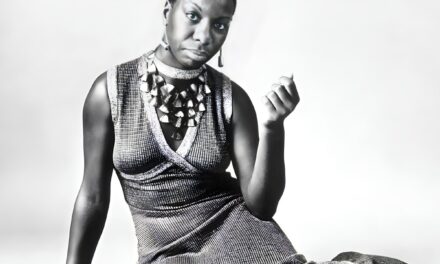
As public institutions of higher education in red states across the country (and in some purple ones as well) rush to limit, and even outlaw, efforts to support diversity, equity, and inclusion on their campuses, officials in those states are simultaneously twisting themselves into pretzels as they attempt to communicate a dubious message that their actions are in no way intended to negatively impact students of color.
The University of North Carolina at Chapel Hill highlighted the confusion that such messaging creates when, after their board of governors instituted a DEI ban, university officials voted to divert $2.3 million of previously designated funding to campus police instead. An incoming African American freshman at the university summarized the situation in these words: “It makes me feel like UNC isn’t a place for people like me.”
 Dr. William B. HarveyAcross the country, people of color are facing a reactionary political climate that is as foreboding now as at any time since the onset of the Civil Rights Movement. The unanticipated ferocity of the scripted efforts to eliminate DEI on higher education campuses has caused numerous institutions to reverse their previous commitments to a set of “core values” that were intended to evolve their environments and structures into settings that were more welcoming to and supportive of underrepresented constituencies.
Dr. William B. HarveyAcross the country, people of color are facing a reactionary political climate that is as foreboding now as at any time since the onset of the Civil Rights Movement. The unanticipated ferocity of the scripted efforts to eliminate DEI on higher education campuses has caused numerous institutions to reverse their previous commitments to a set of “core values” that were intended to evolve their environments and structures into settings that were more welcoming to and supportive of underrepresented constituencies.
It’s quite concerning that, in the very societal organizations whose functions are to develop the movers and shakers of future generations, the leadership of the higher education community has, for the most part, responded with placid objections and mild resistance to the hostile takeover of the academy, despite external attacks that are being launched on such bedrock principles as academic freedom and tenure.
However, DEI advocates refuse to remain silent and docile. For example, as a means of demonstrating institutional accountability, an interesting proposal has been presented in California that would identify those colleges and universities in the state that value their African American students by recognizing them as “Black-Serving Institutions.” The designation would be accorded to colleges and universities if they enroll a student body that’s at least 10% Black, or have at least 1,500 Black students, and that take various measures to support them, including drafting a Black student success plan (and allocating resources to the plan), fostering a robust African American studies program and cocurricular educational activities or affinity centers for Black students.
According to Steven Bradford, the California senator who authored the initiative in the state legislature, a designation as a “Black-Serving Institution” would send a message to Black students about which colleges and universities offer meaningful supports for them and have sizable Black student communities. Institutions seeking the five-year designation would have to submit graduation rates for all students and highlight the rates for Black students for the past three years. Bradford thinks that receiving the “Black-Serving Institution” label will present a great opportunity to boost enrollment and increase graduation rates for African American students. “Being in an environment that they know is inclusive and welcoming, that is culturally sensitive, helps in making that experience far more successful for them,” he said.
The immediate response to a proposal of this kind from the opponents of DEI will likely be to label it as divisive and polarizing. But that argument falters when held against the realization that similar designations are already in use at numerous institutions throughout the nation. In fact, many colleges and universities seek to be identified as an HSI (Hispanic-Serving Institution) or as an AANAPISI (Asian American and Native American Pacific Islander-Serving Institution) to demonstrate that they have achieved an enrollment of 25% Latinx or 10% Asian American and Native American Pacific Islander.
There is great concern that African American student enrollment is reported to have declined by 29% from 2011 to 2019, representing a decrease of 600,000 persons. It’s crucial that ways are found to reverse this trend, and using the Black-Serving Institution designation might be a good way to assure students that they are valued.
Finally, kudos to Chancellor Dr. Michael Drake and the University of California for sponsoring a recent convening of academicians and representatives of higher education organizations to address and correct the intentional misrepresentations and distortions of DEI that are being disseminated to the public through various means.
The theme of the gathering held on the campus of UCLA was, “Advancing Our Imperative: Educational Equity and the Future of Higher Education,” and some of the sessions can be accessed through the following link: https://diversity.universityofcalifornia.edu/news-and-events/advancing-our-imperative-presenters.html
Having been granted the honor and privilege of making the opening remarks at this event, I shared these comments with the audience: Your attendance at this conference will send a message that we draw from the strength of our ancestors, who fought similar battles during their lifetimes, and we will not run, we will not hide, and in spite of the attacks on our identity, our integrity, and our humanity, we will not be stopped, because in the words of James Baldwin, “we can make America what America must become.”
Dr. William B. Harvey serves as Distinguished Scholar at the American Association for Access, Equity and Diversity in Washington, D.C.




